Potentials and Investment Opportunities in Rio Grande do Norte
Rosalba Ciarlini, Governor of Rio Grande do Norte
Rio Grande do Norte is a Brazilian State strategically located in Northeast Brazil, close to the USA, Europe and Africa. Rosalba Ciarlini presents the state and mentions its great potentials and investment opportunities. She also discusses the impacts of the World Cup and shares her vision for the future.
Interview with Rosalba Ciarlini, Governor of Rio Grande do Norte
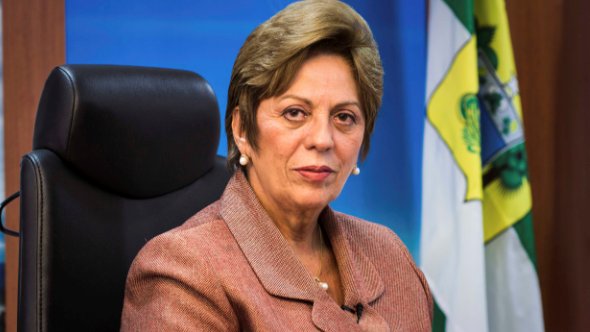
I would like to start this interview with an introduction on the state of Rio Grande do Norte. Can you please introduce the state to anyone that lives abroad and that may not know it?
In terms of energy we have thermoelectric energy, natural gas and there’s the potential of the wind power. All of this enables us to attract investments. For example, in the case of natural gas, by creating an incentive so that natural gas can be offered cheaper to companies.
Rio Grande do Norte is located in the Northeast of Brazil. It is a state with a population of about 3.4 million inhabitants. It is in a very special, specific location, because if you check the map of Brazil, you will see that Rio Grande do Norte is right where there is a curve. It is situated where it is the closest to Europe, Africa and also North America, which puts us in a privileged position and because of this we are constructing an international cargo airport that will be ready next year. It will be the largest cargo airport of Brazil.
In terms of economic attractions, which sectors is the state prioritizing at the moment?
We have immense potential in the mining sector. Rio Grande do Norte is a state where limestone basically “blossoms” from the earth. There is immense potential for manufacturing industries and other industries that will utilize the limestone. The state also has iron-ore deposits and is also rich in xylite (tungsten ore), semi-precious stones, marble, granite and even gold. We also have demarcated gold deposits, which have been licensed to be mined.
Apart from the mineral sector, it is a state that, due to its location, has constant winds which are of a velocity that is adequate for wind power. We are first in Brazil in terms of wind farms, and we have a lot of potential to grow much more.
Furthermore, we are also petroleum producers. On land we are the greatest oil producers of Brazil, mainly because most of Brazil’s petroleum comes from offshore platforms. However, we are also already developing offshore platforms off of our coast. We are also self-sufficient in terms of natural gas, and our natural gas is sent to other north eastern states. This provides us with a differential, because in terms of energy we have thermoelectric energy, we have natural gas, and there’s the potential of the wind power. All of this enables us to attract investments. For example, in the case of natural gas, by creating an incentive so that natural gas can be offered cheaper to companies, since our natural gas here is the cheapest from all of Brazil.
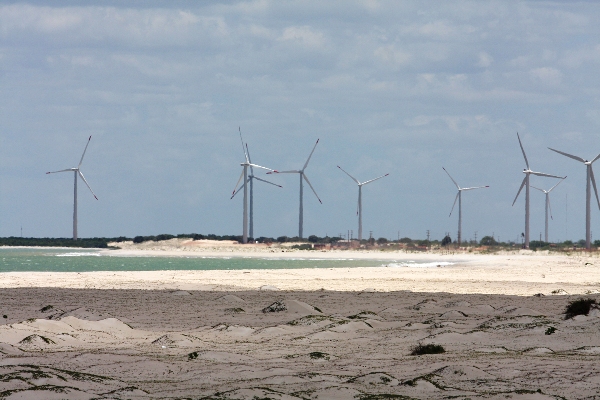
In addition to the petroleum and the natural gas, we are the Brazilian state that produces 96% of Brazil’s salt. Brazil’s salt is from Rio Grande do Norte and this wealth can also be utilized in other types of industries. Salt is used in chemical industries and there is also a lot of potential so we can develop a soda ash factory in Brazil, since Brazil still depends on the soda ash that comes from abroad. Our state is very interested in doing this because we have salt and the other components for the production of soda ash, and so we could become the Brazilian reference for soda ash in Brazil. We’ve already spoken about salt, about petroleum, about minerals. It is also a state where our land is extremely fertile even though it is semi-arid. Look at how interesting this is, at the moment we are going through a very serious drought, but in the areas where there are dams, like the Vale do Açu (Açu Valley), the Chapada do Apodi (Apodi Plateau), which are the most fertile lands, we produce irrigated, tropical fruit and this enables our state to be one of the greatest producers of irrigated melons. They are melons of extremely good quality, because it’s exactly due to the lack of rain that we can increase the number of harvests throughout the year.
Besides the irrigation which is something that has so much potential, because we can really advance a lot with it by attracting investments in this area, we are also shrimp farmers. Shrimp farming has really strengthened the generation of income and jobs and has been growing a lot in our state. Due to the shrimp farming, we would like to and are in the position to associate other activities with it, such as fish hatcheries and other aquaculture related activities. So this is another prospect that is opening up for our state.
We also need to discuss beauty, our beaches are beautiful. Each beach has a different characteristic, a bit of Mata Atlântica (Atlantic Rainforest) and sand dunes. In other places it is the Sertão (Arid Backlands) meeting with the sea. The water temperature is approximately 26°C, and these are very strong factors for tourism. Tourism is one of our most important activities, especially in the capital and around the capital.
What is the government’s current focal point?
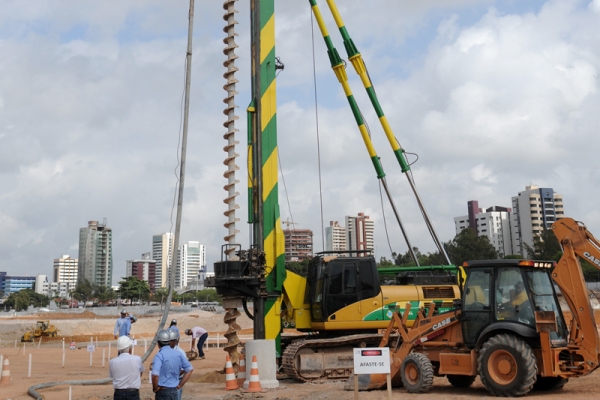
To create conditions for better infrastructure and to support education (which is fundamental), since education is this government’s first priority. We are recovering a lot of lost time and each time we are improving vocational education more and more (with a focus on our potential from region to region). Today we have grown in terms of university courses, and generally in terms of undergraduate courses in research and innovation. This has been a focus of our government because, at the moment, though it may still seem like very little, there was actually nothing before. Today we are truly concerned about having a technological centre for mining, which we have already started to build in partnership with the federal university and the federal technical institute. We are also considering a Wind Power Technological Centre and we also have CTGás, which is the Technological Centre for Gas and Petroleum By-products. These are all fundamental things which we would utilize or that would be combined with High School or Vocational Training in a manner in which we can prepare our population in order for it to be fit to develop these activities: education, economic development and infrastructure.
In terms of infrastructure we are talking about mobility infrastructure, logistics and infrastructure of each time expanding access to energy in all areas of the state, and also to give sustainability to our state in handling the semi-arid climate. There are many actions that we are implementing such as the construction of new dams, of pipelines, of wells. In short, in this area, this was already a part of our program, despite last year and this year experiencing a drought, which demonstrates even more the need for growth in water resources management, so that whether it rains or not we are in a position of sustainability.
Apart from that, another focus of the administration, in terms of development for our future, is basic sanitation. We need a sanitary sewer system and to take care of the environment. This has been a brand that we have built and we are now starting a huge program to adapt our state until the end of our mandate. We have a daring goal, 80% of the whole state with basic sanitation, ideally 100% would be better, but we know that it would be impossible to achieve this in such little time. But it will already be a huge step so that we can be in a better position, in the case of sanitation, it is fundamental for infrastructure for the treatment of industrial waste, for everything related to it is necessary.
It is also important to note that the people here are very creative, they are very skilful, and there is a specific region within the state that does a lot of handicrafts. Within handicrafts, there are several types of activities, it’s not just embroidery. It’s all a matter of people having ability, and then you can develop an activity with shoes, purses or a fashion segment. This is something that is also very present in our state, which is this skill, this creativity, and this ability that our people have regarding art.
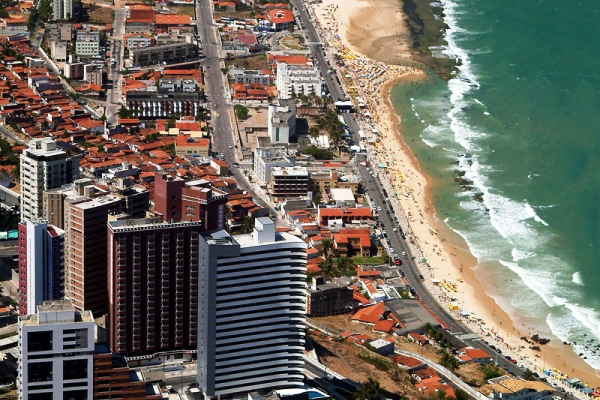
Are there any kinds of opportunities for a foreign investor within these sectors that you mentioned?
Of course, in fact, there is still a lot of ground to be broken within the mining sector. There are some industries that have arrived here: cement industries and industries that make lime for steel mills, processing feldspar. We have also started industries to polish marble and granite, but we need more. In the case of wind power, we don’t want to produce only wind power, because we are also searching for solar power projects, which can be connected to wind power or can be isolated from it, but in the end we would be utilizing clean electric energy. In order to do that, we want to attract investors that will produce the solar panels, or the wind turbines or whatever is necessary for these activities. As a result of that, Rio Grande do Norte would become the supplier for the whole Northeastern region because these are the kinds of energy that are definitely growing throughout the entire Norteast. Rio Grande do Norte, as I mentioned before, is located where I like to call the elbow of the map of Brazil, which is the corner where we have constant winds that are at a velocity that is quite adequate to produce wind power, not only on the coast, but throughout the whole state.
As Governor of the state, how do you envision the state in 2-3 years? What kinds of results would you like to achieve? And what is your dream in the long run?
It’s my state. I love this state. My heart’s roots are firmly planted here. I am certain that it is the state that has everything, because it is small and well divided. The largest city is Natal, where the population is approximately 700,000 inhabitants. So there aren’t any mega cities, but there are cities that are growing. We also want them to grow in a sustainable manner, in regards to education and opportunities. Each region being developed in the same way so that it can really be a sustainable state, where everyone has opportunities; where we all can have more equality, by fixing social inequality; and by doing so we will have a small state that is large, due to opportunities and because it is more just. This is the dream that I have for my lifetime.
At the moment, my greatest dream is to associate education and entrepreneurship through my work. You see today that small business owners, microbusiness owners and small businesses in general have a significant share when it comes to generating jobs, and each time we want to make them grow more via associations, cooperatives, micro-entrepreneurs, formalizing things and creating credit so that each one of them can develop their activity. No one is big, by starting out big. You start out small, and after that you can transform into a big industrialist or into a big merchant. At the moment, this is what we envision. The state needs development, investments and to take advantage of the potential that it has within its natural wealth in order to make our state rich in jobs and opportunities, but infrastructure and education are fundamental. If we increase the amount of opportunities, the state will be able to invest more into public safety and health, and by doing so we are able to consolidate the tripod of citizenship which is: education, public safety and health.
I would like you to send a message to international investors that are going to read your interview. Why should they choose Rio Grande do Norte instead of another Brazilian state? Also, what kind of incentive does the state provide?
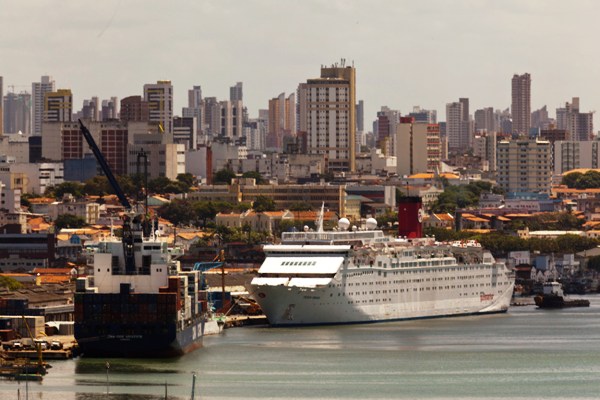
They should choose Rio Grande do Norte because of all of the potential it has. And there is more, by creating the necessary conditions; we are here with our arms wide open to welcome them. The state provides incentives via the ICMS (VAT); we have PROAD, which is a program that supports industrial development, so there is a fiscal incentive; then there is also Progás which is an incentive related to gas. We also have other incentives that can be discussed, such as location in terms of speed in doing things. In Brazil there is a lot of bureaucracy, and this is something we are trying to reduce, because time is money. Businessmen can’t waste their time. Why is it that today we have 20 wind power farms which are in full operation, 70 being implemented and another 60 that have already been licenced? Because I saw that this was an opportunity (apart from it being necessary, natural and that it’s important to have the environmental licenses) to create a specific nucleus to speed thing up. I often say, that you can’t just arrive and let time pass you by. If you can do it, do it. If you can’t, just say right away that you can’t. Business owners don’t want to waste their time, nor can they afford to. So that is what I mean, these are the fiscal incentives. We also have a port, another thing that is necessary and fundamental; our port is being enlarged and restructured for cruise ship tourism by creating a station to welcome people and by enlarging its cargo storage area. And despite all of this, we still need a second port which we imagine can be built with a PPP (Public Private Partnership) or a concession.
Our airport from São Gonçalo which is going to become our true cargo hub, with cargo that will arrive here to be distributed all over Brazil and who knows to the rest of South America is a concession that the government opened. So it is being built like that, as a concession, a company is going to manage it. Likewise, we have the same opportunity for another port, which would be for the mineral sector, iron, fruits, etc. In short, in the region where there is a concentration of fruits, petroleum, iron ore, there is an opportunity for a second port that already has this feasibility.
We also need a railway line to interconnect to the Transnordestina, which would be a relatively small stretch that already existed in the past and that would be reactivated. The whole stretch would be reactivated to interconnect regions that produce salt, limestone, fruits and iron ore so that they can get to our port and to the Transnordestina, which is a railway line that is being built which goes through all of the Nordeste (Northeastern region) and connects various ports of the Nordeste. However, this railway is not in Rio Grande do Norte yet, so it needs to be designed with a branch to Rio Grande do Norte. These are some of the things that we can see in terms of investments. There is also a possibility here with these incentives that we can offer to attract investors so that they come to our state. I know that they want to go where they will get good results, and I am sure that they will make a profit here.
Natal is going to be one of the host cities during the World Cup in 2014, what will be the impacts of this event on the state?
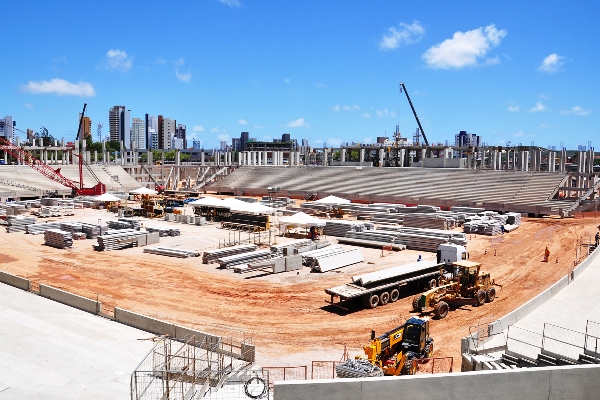
I certainly think that our greatest legacy from the World Cup will be the visibility that our stadium, city and state will get, and consequently tourism will grow a lot. A good fact to remember is that since Salvador, Ceará and Pernambuco were already chosen as host cities in the Nordeste, Natal was a very strategic choice because of its location. Perhaps this choice was made just as it was made during the Second World War, where the greatest air base of the allied forces out of North American territory, which we used to call the Trampolim da Vitória (Victory Trampoline), was set up here in Natal, with the purpose of making access easier to get to Africa and Europe. Thousands of men came through here due to our location.
I think Natal was chosen for the World Cup because of our location, and because of our hotel chains that contain 35,000 beds and are of good quality, within a structure where most hotels are on the seashore. I think these are some of the reasons why we were chosen instead of other southern states. I believe that this already shows that the World Cup in Rio Grande do Norte is a reference, and that in terms of leaving a legacy it will help to have what is being constructed for mobility, the large stadium which the city will take pride in, and the sports incentive (which is fundamental), but we also have to look at what this will mean as an economic return for our state.
I would like to extend an invitation. I think you now know a bit of our history, of our wealth, of our potential, a bit about Rio Grande do Norte, but it would be good if you came to check it out. You will be very well received and I am sure that you will like it!